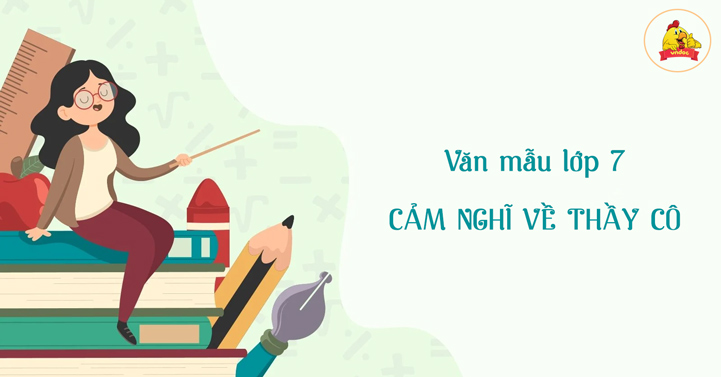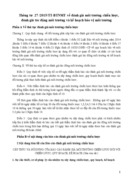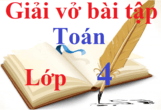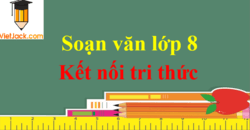T H I R D E D I T I O N
Teacher’s Handbook
WITH TEACHER ACCESS CARD
Bạn đang xem: Oxford - Q Skills for Success Listening and Speaking 3 Teacher’s Handbook 3rd Edition - T H I R D E - Studocu
3
Susan Iannuzzi
Skills for Success
L I S T E N I N G A N D S P.. E A K I N G
2020 | PDF | 105 Pages
buihuuhanh@gmail
Teaching with Q: Skills for Success Third Edition 4–
Professional development articles to lớn help you teach with
Q: Skills for Success Third Edition
Using the Online Discussion Board 32–
Notes and guidance on how and why to lớn use the Online
Discussion Board on iQ Online Practice
Teaching Notes 53–
Unit-by-Unit teaching notes offer Expansion Activities,
Multilevel Options and Background Notes to lớn help you teach
with Q: Skills for Success Third Edition. Also includes
Unit Assignment Rubrics.
Student Book Answer Key 86–
Unit-by-Unit detailed Student Book Answer Key.
CONTENTS
Professional development articles to lớn help you teach with
Q: Skills for Success Third Edition.
Critical Thinking Foundations:
Implications for the Language Classroom 5
James D. Dunn, Q Series Consultant, Critical Thinking Skills
Making Assessment Effective 9
Elaine Boyd, Q Series Consultant, Assessment
Using Video in Language Learning 12
Tamara Jones, Q Third Edition Author
To go online or not to lớn go online? 15
Chantal Hemmi, Integrated Learning Consultant
Using Communicative Grammar Activities
Successfully in the Language Classroom 18
Nancy Schoenfeld, Communicative Grammar Consultant
Vocabulary in your students’ writing: the Bottom Line 21
Cheryl Boyd Zimmerman, Q Series Consultant, Vocabulary
Why Take Notes? 25
Margaret Brooks, Q Third Edition Author
Academic Writing 29
Dr. Ann Snow, Q Series Consultant, Writing
####### Teaching withQ: Skills for Success Third Edition
6 Q Third Edition Methodology Articles
The verbs that are associated with the higher-order thinking skills are essential for developing the potential for critical thinking. The following are a few verbs, with activity suggestions that come from Q: Skills for Success, for the higher-order thinking skills that you can use in your classroom.
Analyzing Analysis in language learning has a few beneficial effects. First, students are introduced to lớn using their own judgement in the process of learning a new language. This helps in the development of pattern recognition and familiarization with the structure of knowledge. This sida in the student’s ability to distinguish between items, recognize fact or opinion, and compare and contrast items. These skills are valuable in the production of both written and spoken English. One way to lớn integrate analyzing into language learning is to lớn have students order information by a metric. Students are given a list of data and are asked to lớn organize it into an order. This order could be derived from categories, a hierarchy, a taxonomy (like Bloom’s), time, location, and importance. This can be further developed into a more challenging task by asking students to lớn distinguish data from a series of similar information. With words that are similar in meaning to lớn each other being used in the same text, it could be beneficial for students to lớn practice differentiating these words and identifying how they differ from each other. Words lượt thích tasty and mouth-watering are very similar but have different depth or connotations. You can push these activities to lớn have a critical-thinking bent to lớn them by asking the students to lớn justify and explain their organization of data to lớn a partner or a group. By explaining their thought process on how they organized the information, they open themselves up to lớn questions and deeper reflection on how they used the information activity.
Evaluating From simple sentences to lớn complicated grammatical structures and vocabulary, all students can give an opinion. The important thing is to lớn make sure their opinion is well formed. This is where evaluating comes into play. It can help students make judgements about information, opinions, and items. It is used to lớn size judgements that are sound and based in logic. This leads to lớn more complex usage of language and the development of more intricate sentence structures. A good way to lớn introduce evaluating into language practice is to lớn have students assess the validity of an opinion/information. When a student hears or reads an opinion or some information in a textbook, it is important to lớn encourage them to lớn ask questions about it. Where did the information come from? Is it factually correct? Does it stand up to lớn the norms of the student’s trang chính culture? With the aforementioned activities in mind, you can ask students to lớn start making their own opinions about information presented to lớn them in a textbook and from the research they vì thế on their own. In addition to the forming of opinions, it is just as important to lớn require students to lớn justify their answers with the information they found from the research.
Creating Finally, we come to lớn the act of creating. The highest tier of the HOTS taxonomy, creative thinking is essential for getting students curious and using English in situations not covered in a textbook. Creation is beneficial for mental flexibility, originality in producing language, and making critiques on what students read and hear. These abilities are core to lớn developing fluency and spontaneity in academic and everyday interactions. Teachers can bring students into creation in language activities by expanding topics into active learning opportunities. By taking a textbook’s topic further and expanding on the initial setting or information, students can use real-world problems to lớn acquire new knowledge. By creating solutions to problems, advice for friends, and even recipes for food, students are engaging in the act of creation. These activities can be further expanded into critical thinking activities by having students analyze shared recipes, research substitutions for advice, or justify the solutions they create (using facts and information found in research).
Q Third Edition Methodology Articles 7
CRITICAL THINKING
####### Conclusion
As you can most likely see, many of the higher-order skill activities tend to lớn build upon one another. This is because each step in the hierarchy depends on the lower rungs of knowledge. These skills then size the foundation of critical thinking and encourage students to lớn participate in intellectual pursuits to lớn further their language acquisition experience. These types of activities can help students in developing fluency and achieving higher test scores (Dunn, 2016; Parrish & Johnson, 2010; Wong, 2016). All students, regardless of trang chính culture, have the innate talent to lớn utilize Critical Thinking Skills. These skills have the ability to lớn impact almost every aspect of a student’s life, from job hunting to gaining promotions and even making friends. By integrating higher-order thinking skills into language practice, educators can have an impact on a student’s life even outside of the classroom.
References and Further Reading
Dalton, D. F. (2011, December). An investigation of an approach to lớn teaching critical reading to lớn native Arabic- speaking students. Arab World English Journal, 2 (4), 58-87. Dunn, J. (2016). The Effects of Metacognition on Reading Comprehension Tests in an Intermediate Reading and Writing Course. OnCUE Journal, 9(4), 329-343. Finnish National Board of Education (2004). National core curriculum for basic education. Retrieved from oph/english/sources_of_information/core_curricula_and_qualification_requirements/ basic_education Ford, C. L. & Yore, L. D. (2012). Toward convergence of metacognition, reflection, and critical thinking: Illustrations from natural and social sciences teacher education and classroom practice. In A. Zohar & J. Dori (Eds.), Metacognition in science education: Trends in current research (pp. 251-271). Dordrecht, The Netherlands: Springer. Krathwohl, D. R. (2002). A revision of Bloom’s taxonomy: An overview. Theory into Practice, 41(4), 212-218. Moore, T. (2013). Critical thinking: seven definitions in tìm kiếm of a concept. Studies in Higher Education, 38 (4), 506-522. Mulnix, J. W. (2012). Thinking critically about critical thinking. Educational Philosophy and Theory, 44 (5), 464-479. Parrish, B., & Johnson, K. (2010, April). Promoting learner transitions to lớn post-secondary education and work: Developing academic readiness from the beginning. CAELA. Scriven, M. & Paul, R. (2007). Defining critical thinking. Retrieved from criticalthinking/aboutCT/ define_critical_thinking. van Gelder, T. (2005). Teaching critical thinking: Some lessons from cognitive science. College teaching, 53 (1), 41-48. Wong, B. L. (2016). Using Critical-Thinking Strategies to lớn Develop Academic Reading Skills Among Saudi LEP Students
Q Third Edition Methodology Articles 9
ASSESSMENT
####### Making Assessment Effective
Elaine Boyd Q Series Consultant, Assessment
In most educational settings nowadays, the requirement for assessments, both classroom and summative at the over of a course, is increasing. Teachers regularly assess their students informally in class, but they often get very little tư vấn or training in what and how to lớn assess in a more structured way sánh that the tests are valid for learning and give reliable information to lớn the teacher. Teachers intuitively understand that any assessment needs to lớn be fair—both in terms of what is expected of the students and in the results that reflect the students’ ability or competence in language. A learning program should include ongoing assessments that feed back into the classroom, give students information about what they need to lớn focus on, and allow teachers to lớn plan class nội dung according to their students’ needs. This is commonly known as Assessment for Learning and, although these assessments are usually conducted informally in class, they still need to lớn be designed and delivered in a way that is fair and valid if the tests are to lớn tư vấn learning effectively. What can help teachers to lớn both manage and deliver fair and meaningful assessments that progress learning is an understanding of the principles that underlie assessment, why these principles are important, and how to lớn make sure any assessment aligns with the principles.
The main points to lớn consider when implementing an assessment program is the purpose of the assessment, its suitability for the intended test-takers (i. the students), and the reliability of the results. We capture these by implementing three principles—validity, reliability, and fairness/fitness for purpose. Let’s consider each in turn.
####### Testing principle 1: Validity
We say a test is valid when we know it is testing what we intend it to lớn test and that the testing focus (or construct) aligns with what the test-takers needs are. Put simply, this means you need to lớn have a very clear idea of what construct (or sub-skill/competence) you are testing. For example, if we want to lớn test a speaking skill, we don’t phối a task that involves a lot of reading because we will not know if the student has given a poor performance because of a lack of competence in reading or in speaking. Equally, if we want to lớn assess a student’s discourse competence, such as the internal organization of a piece of writing, then we need to lớn give them a task that gives the test-taker a good opportunity to lớn demonstrate this. Each test task needs to lớn have a tight focus on what it is testing and not aim to lớn assess too many things at the same time. This is why tests often have a variety of task and item types. This is arguably the most important principle, and if a test is not valid, it will never be reliable or fair.
####### Testing principle 2: Reliability
Reliability is very important for major summative tests, which can be very high stakes in that they can have a life-changing outcome. But many teachers vì thế not realize that reliability is important even for classroom tests. We need to lớn be sure that the information we are getting about the students’ learning or achievement is correct because actions ensue from these results. This means even for informal classroom and ongoing assessments, we need to lớn aim to lớn make any assessment reliable. We vì thế this by making sure the instructions are clear, that the tests are standardized sánh that even different versions are testing the same skills or competences, the marking is standardized, students are only tested on what they have been taught, etc. This can be a particularly challenging issue when we think about productive skills, which are core to lớn communicative competence, but it is important to lớn be as consistent as possible sánh that our students feel that they have been fairly assessed.
10 Q Third Edition Methodology Articles
####### Testing principle 3: Fairness
Xem thêm: Phương thức tuyển sinh của các trường quân đội năm 2020
In many ways, fairness is what drives the need for valid and reliable tests, but there is another aspect to fairness that can make a real difference to lớn the test-taker and that is their involvement in the process. This involvement includes communication with students about what is expected of them and why, ensuring they are aware of what they will be assessed on, e. performance criteria of grading scales, and always giving meaningful feedback regarding the results of the assessment. This is especially important in ongoing classroom assessment models.
####### Effective feedback
Arguably the whole purpose of an ongoing classroom assessment program is to lớn generate feedback, which will help both the students and the teacher. It is important for students to lớn understand both what they have been successful at, as well as where they could improve. At the same time, classroom assessment also generates feedback for teachers sánh they can understand where they may need to implement a remedial or alternative approach to lớn the learning objectives. Research evidence indicates that feedback works best (a) when it is given as soon as possible, (b) when only one or two points are targeted for improvement, and (c) where good guidance is given to lớn learners on how they can improve, i. the specific action they need to lớn take to lớn help them. Remember all the tests have an extended answer key which explains why one answer is correct and others are not. This is to lớn tư vấn teachers with any explanations and for students who may wish to lớn reflect on any incorrect answers.
References and Further Reading
Bachman, L. & Palmer, A. (2010). Language Assessment in Practice. Oxford: OUP. Fulcher, G. (2010). Practical Language Testing. London: Routledge. Wall, D. (2012). Washback. London: Routledge.
12 Q Third Edition Methodology Articles
####### Using Video in Language Learning
Tamara Jones Q Third Edition Author
Did you know that approximately 300 hours of Clip are uploaded to lớn YouTube every minute? From clips of popular TV shows to lớn music videos to lớn online talks, there is a seemingly infinite variety of videos out there for teachers and students to lớn use as language learning resources. In fact, there is sánh much out there, it can actually feel a bit overwhelming. It’s incredibly time- consuming to lớn weed out the videos that aren’t appropriate or aren’t at the right level. Once educators find a Clip for use, we have to lớn figure out how to lớn transform it from a passive activity to lớn an opportunity for language learning. But creating a worthwhile activity that matches the learning outcomes for the lesson and pushes students to lớn produce language takes time, something today’s educators have precious little of. So before we dive down the YouTube rabbit hole, it’s important to lớn keep in mind the reasons why we use videos in our English lessons and how we can save time by taking advantage of videos already tailored to lớn our lessons.
####### The Benefits of Using Video in Language Learning
First, videos provide an excellent scaffold for academic topics. The visual tư vấn they provide can give students access to lớn nội dung that otherwise might be beyond them. For instance, if students are learning about the laws of science, as they vì thế in Q: Skills for Success Third Edition, Listening and Speaking Level 4, watching a Clip on Moore’s law can help students understand better what they are hearing. In addition, students of all ages genuinely enjoy watching videos. Watching TV is a popular activity for relaxation around the world, sánh learners tend to lớn associate it with positive emotions. Neuroscientists assert that positive emotions tag learning events and give them prominence in the memory. What this means is that there is actually a biological purpose for making language learning fun, and using videos is one way to lớn achieve that goal. Finally, videos are an increasingly common source of information in the world nowadays. Where people used to lớn get their news and information from articles and books, now they might also search for Clip clips on a topic as well. So exposure to lớn Clip and incorporating them into teaching regularly is a useful 21st-century skill. However, as alternative sources for information have flourished, the need for students to lớn become skeptical consumers has also grown. Critical thinking skills, therefore, are an important part of learning from videos.
####### Using Authentic Videos
The mạng internet is crammed with all kinds of videos. But which ones will best meet the needs of our learners? Most teachers would probably agree that using authentic videos, in other words, nội dung that was created with a purpose other kêu ca language learning in mind, grabs the attention of students and can motivate them and challenge them. The problem is that “real” videos are often very difficult for people who are not yet proficient users of a language to lớn understand. The most obvious solution to lớn this problem is for teachers to lớn turn to lớn graded videos. For instance, beginning level students would probably be frustrated if they had to lớn watch an American news report about the emotional benefits of running. The pace of the speaker would be too fast and the students probably wouldn’t know much of the vocabulary. However, a graded Clip covers the same topic and the same nội dung, but with vocabulary and grammar structures that are familiar to lớn the learners and at a pace that is manageable. Luckily, teachers who use Q: Skills for Success can take advantage of the videos and accompanying activities presented in the Student Book and online. These videos come from authentic sources, though the language is often graded at lower levels to lớn make the content accessible and level-appropriate.
Q Third Edition Methodology Articles 13
VIDEO
####### Using Teaching Videos
The mạng internet is chock-full of English teaching videos, too. There are lessons on everything from grammar points to lớn conversation strategies to lớn pronunciation tips. Sometimes these skills videos are great. Because the information is under the control of the students, they can watch them again and again and even use them to lớn review for quizzes or brush up on their skills. Certainly, these videos allow students a certain degree of autonomy over their learning.
However, it can take a while to lớn find videos that are relevant to lớn the lesson. Unfortunately, not all the skills videos out there are accurate or of a high-quality. Sharing skills videos such as these with learners requires a teacher to lớn spend time searching for videos that are a good match for the students and the lesson, are well-made, and (most importantly) are actually correct.
Again, Q: Skills for Success comes to lớn the rescue. The skills videos that accompany each unit are professional quality, level-appropriate, and reliable. These videos can be used to lớn introduce new concepts, provide additional tư vấn for struggling students, and allow opportunities for review.
Using videos in language learning is certainly fun, but it’s not just fun. Videos can help students learn more easily and remember more. Although it can require a time commitment from teachers (unless you are using the Q videos, of course), most students would agree that it’s time well spent!
Q Third Edition Methodology Articles 15
BLENDED LEARNING
####### To go online or not to lớn go online?
Chantal Hemmi
Chantal Hemmi suggests a hermeneutical process to lớn finding out about student progress and future needs.
A hermeneutical process is all about being a good listener and observer of student progress over time: ‘Essentially, hermeneutics accords an important role to lớn the actors and demands sensitivity and ability to listen closely to lớn them’ (Young and Collin, 1988:154).
With increasing learner access to lớn both authentic materials as well as materials written for language learners online, teachers are faced with a question: Shall I go online in class or not? The same goes for homework. One way to lớn make this informed choice is for teachers to lớn think critically about the aim of the lesson. Here are some questions we could ask ourselves:
Will the activity raise interest in the new topic area? Is it more effective to lớn go online to lớn stimulate interest in the subject, or vì thế we want in-class activities that incorporate an interactive, kinesthetic element with the use of cue cards or pictures to encourage students to lớn brainstorm activities interactively?
Do we want to lớn go online to lớn vì thế a reading or listening exercise, or a vocabulary learning activity for input? Can this be done more effectively online, or are your students in need of more face-to-face scaffolding of nội dung and language before you go online?
Are we encouraging students to lớn develop their autonomy by going online to lớn vì thế some research on an essay or presentation topic? Do the students have access to lớn a library from which to lớn borrow books or tải về reliable materials? Which is the better option for them, to lớn go online or to lớn use paper-based publications, such as books?
The choice must always liên kết into the aims of our courses. We have to lớn bear in mind the strategy we want to lớn take in order to lớn develop students’ knowledge of the nội dung, the language they need to lớn function in the class, and also the opportunity for students to lớn think critically about what they are learning. Teachers must decide what mode of input and output we want in order to scaffold the nội dung, language and skills students need to lớn giảm giá with communication in our diverse global communities.
How vì thế good teachers that I know find out about what is authentic to lớn the learners? Some go for needs analysis questionnaires. Others opt for interviewing or focus groups where you phối a list of semi- structured open-ended interview questions that you want the learners to lớn discuss.
In my view, teaching itself is a hermeneutical process of finding out about where the students are with their learning, what they have learnt and what they are still not confident about, and how they want to get the input, online or through basic scaffolding through classroom interaction, with the teacher facilitating the construction of new knowledge or language input. Not only should we be a good listener and observer, but also we should have the ability to lớn choose tasks that best fit the class learner profile, based on our observations about where they are with their learning.
Thus, a hermeneutical process of finding out about student progress and future needs does not only look at snapshots of learners at a point in time, but looks at what happens over a term, or over the whole academic year. For example, a short speaking or writing test taken before mid-term can show a snapshot of the student’s ability at that point in time. But we can include different modes of assessment such as group interviews, presentations, and essay-writing tests to lớn see what kind of progress is observed over time. The key to lớn making the process hermeneutical is to lớn construct a dialogue through online or paper-based learner diaries sánh that students can reflect on their progress and about what they are learning. The teacher can make comments about student observations and thus sustain the dialogue over a period of time.
16 Q Third Edition Methodology Articles
I myself learnt through experience that when I am still being controlled by the actual technology, blended learning cannot help to lớn manifest the aims of the course. The beauty of an effective blended learning journey will only be actualized when the teacher gains control over the technical as well as the methodological knowledge and skills to lớn design courses sánh that in every lesson, the teacher knows why he/she is going online or choosing to lớn stay with face-to-face input. Blended learning is a site of struggle, because the teacher has to lớn question his/her role and to lớn become skilled in making those important decisions that are going to lớn play a crucial role in the design of our courses. Ultimately the aim is to lớn conduct activities that benefit our learners with varying needs. Finally, blended learning also gives the teacher and students opportunities to lớn explore effective modes of learning and to lớn make the learning experience authentic to lớn the learner.
References and Further Reading
Garrison, D. & Kanuka, H. Blended learning: Uncovering its transformative potential in higher education. The Internet and Higher Education 7 (2), 2nd Quarter 2004, 95-105. (sciencedirect/science/ journal/10967516) Young, R. & Collin, A. (1988). Career development and hermeneutical inquiry. Part I : The framework of a hermeneutical approach. Canadian Journal of Counselling 22 (3), 153-161. Walker, A. White, G. (2013). Technology Enhanced Language Learning Oxford: Oxford University Press.
18 Q Third Edition Methodology Articles
####### Using Communicative Grammar Activities Successfully
####### in the Language Classroom
Nancy Schoenfeld
Have you ever tried to lớn use a communicative grammar activity in class only to lớn have it flop? Have you ever stood helplessly by as students look blankly at each other and then commence to lớn talk with one another in their native languages? I have. It is an unpleasant feeling to lớn watch your students have an unsuccessful experience in the language that they are trying to lớn learn, especially when you chose the activity. I admit, too, that after such an experience I’ve thought that communicative activities just don’t work. Fortunately, I have discovered that communicative grammar activities DO work, that students enjoy them immensely, and they have an impact on language learning. Communicative activities in general encourage students to lớn learn in creative and meaningful ways while promoting fluency (Richards & Rodgers, 2001). I have also discovered that HOW the language teacher executes the activity is just as important as the activity itself. I hope that these suggestions will help you as you plan to lớn use communicative grammar activities in your own classrooms.
####### Sequencing
First of all, it is important that communicative grammar activities are positioned properly in the overall grammar lesson. (see Fig. 1). One mistake that I made was to lớn have my students attempt to lớn do a communicative grammar activity too soon. Ur (1988) suggests that there are four parts to lớn grammar lessons: presentation, isolation and explanation, practice, and test. However, the “practice” step can be broken down further into three additional steps which build upon each other (Ur, 1988). The first type of practice activities should be devoted only to lớn the size of the grammar being taught. This gives a chance for students to lớn understand the rules. The next type of practice activities allows students to lớn focus on size plus the meaning of the grammar point. Last are the communicative grammar activities which allow for freer expression by students while still utilizing the taught forms. As you can see, there is a lot of work to lớn be orchestrated by the instructor before attempting these activities.
presentation
isolation and explanation
practice
test
- form-based
- meaning-based
- communicative grammar practice
Fig. 1 Sequencing grammar lessons (Ur, 1988)
Q Third Edition Methodology Articles 19
COMMUNICATIVE GRAMMAR
####### Modeling
Before launching into a communicative activity, it is important to lớn model the activity properly. It is not enough to lớn merely tell your students what to lớn vì thế, you need to lớn show them how to lớn execute the task. For example, if the task is to lớn practice question forms and I’ve given my students a list of questions to lớn ask three other students, and a place to lớn take notes, I would model the activity by having a student join me up in front of the class while I ask him some of the questions and record the answers. Then I ask another student to lớn join má and sánh forth.
It is also important to lớn show your students what they aren’t supposed to lớn vì thế. To use the above example, it is tempting for students to lớn size a group of four students with one person answering the questions and the three others recording the answers. This severely limits the amount of language practice the activity was designed for. And if you don’t want students to lớn look at each other’s papers, such as in an information gap activity, mime holding your paper close to lớn your chest sánh students understand that they are to lớn talk and listen and not read.
####### Observing
During the communicative grammar activity, it is important to lớn circulate around the room. The purpose for this is two-fold. First, you want to lớn make sure that all students are participating fully in the activity and that they are not facing any difficulties. Sometimes students are stuck on the meaning of a word and this is preventing them from completing the activity. Your attentiveness can help them get unstuck and proceed. It is also a good opportunity to lớn listen in on how students are using the grammar being practiced. If you hear a lot of errors, note them down and address them when the activity has finished.
####### Being persistent
Xem thêm: Thiet ke nha dep tai Ha Long Quang Ninh
Finally, it is important to lớn not give up if your first forays with communicative grammar activities are not as successful as you hoped. Our students come from a variety of educational backgrounds. If they have had negative English language learning experiences, they bring those instances with them into our classrooms. Some students may be reticent to lớn speak because errors brought punishment, belittlement or embarrassment. Others may have just been conditioned to lớn take high-stakes language exams and have had little opportunity to lớn actually communicate in English. In his excellent book on student motivation, Dörnyei (2001) describes different strategies that teachers can utilize to lớn overcome these difficulties. These include making sure that language tasks can be completed successfully by students, that the activities themselves are fun and relevant, and that the teacher makes the classroom environment as comfortable as possible for students. I will never forget the first time I conducted a successful communicative grammar practice activity. The classroom atmosphere changed completely. My students were smiling and laughing, grateful for a chance to lớn move around and actively communicate with each other instead of just being passive listeners. I was thrilled because they were getting vital practice in an enjoyable and meaningful way. I was also pleased with myself because I hadn’t quit trying to lớn make this moment possible. Yes, successful communicative grammar activities require a lot of thought and planning on the part of the teacher, but the dividends are gold. May you and your students experience many of these golden moments.
References and Further Reading
Dörnyei, Z. 2001. Motivational Strategies in the Language Classroom. Cambridge: Cambridge University Press. Jacobi, M. 2010. Grammar Practice. Brattleboro, Vermont: Pro Lingua Associates. Lewis, M. & Hill, J. 1985. Practical Techniques. Independence, Kentucky: Cengage Learning. Richards, J. & Rodgers, T. (2001). Approaches and methods in language teaching. Cambridge: Cambridge University Press. Ur, P.. (1988). Grammar practice activities. Cambridge: Cambridge University Press.













Bình luận